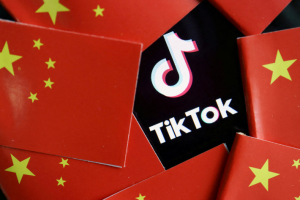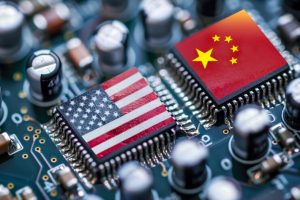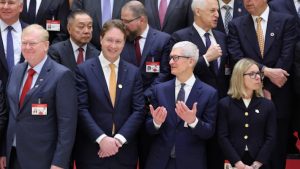China’s economy has endured a major slowdown since the last US election, which is why Donald Trump’s threat to impose 60% tariffs on imports of Chinese goods could greatly undermine its growth in coming years.
Imports from China faced tariff rates of just 7.5% to 25% during Trump’s first term, but there are key reasons why its economy is now in a much more vulnerable position.
The most significant change is the property crisis over the past three years, caused by the collapse of giant builders such as China Evergrande with spectacular levels of debt.
ALSO SEE: Concerns Over Trump Cutting Bilateral Meetings With China
The real estate sector used to drive about a quarter of China’s economic activity, but now the slump has left local governments with trillions in debt and limited revenues.
An enormous level of housing oversupply – tens of millions of apartments – means this sector may never return to the driving seat of Chinese economic growth.
Weak consumption
Low wages and pensions, high youth unemployment and a feeble social safety net leave China’s household spending below 40% of GDP, about 20 percentage points behind the global average.
Boosting that requires either more debt or an overhaul of how national income is distributed, so that it benefits households at the expense of government and businesses, which has been something its leaders have so far been reluctant to do.
While Beijing is lining up fiscal help for them to curb their liabilities, the burden is huge, limiting China’s ability to respond to any external growth shocks.
The International Monetary Fund calculates total government sector debt at 147 trillion yuan ($20.7 trillion) at the end of 2023. Add household and corporate debt and that number surpasses 350 trillion yuan – roughly three times the size of the economy, according to the Bank for International Settlements.
That could be achieved by changing how companies and households are taxed and how government spends the money, raising retirement, health and unemployment benefits and removing an internal passport system responsible for huge rural-urban inequalities, among other reforms.
So far, however, authorities have focused on upgrading the export-reliant manufacturing sector instead, with remarkable success in electric vehicles, solar energy and batteries.
But this also prompted tariffs in the United States, Europe, Turkey and elsewhere.
China may be able to boost external sales in areas where its economy is extremely competitive, but has little control on external demand.
Deflationary pressure
The property crisis, the debt overhang and weak consumption have all caused deflationary pressures.
China’s policy of redirecting resources from the property market to the manufacturing sector, rather than consumers, has fuelled what Western governments describe as industrial overcapacity. This has led to factory gate deflation – falling prices.
Producer price inflation was 4.6% in July 2018 when Trump’s first tariffs came into effect. In September 2024 this stood at minus 2.8%. Consumer price inflation has ground to a paltry 0.4% from 2.1% over that period.
Deflation, which hurts consumption, businesses and growth, could get much worse if tariffs shrink external demand, exacerbating industrial overcapacity.
Currency depreciation risks
The yuan ended 2019 roughly 10% weaker against the dollar than in early 2018, when Washington flagged the tariffs plan and 4% weaker in trade-weighted terms against all currencies. The US curbs increased the effective tariff rate on all Chinese exports by 2.4 percentage points, according to Capital Economics analysts, which means that the yuan’s depreciation more than offset the tariff impact.
This time, the yuan might have to fall 18% against the dollar to fully offset 60% US tariffs, implying a rate of 8.5 per dollar, the analysts calculated – levels unseen since the 1990s Asian financial crisis.
Worried about capital outflows, authorities tried to prevent the yuan from weakening past 7.3 earlier this year. A full adjustment looks unlikely.
Other factors
During the Covid pandemic, Washington unleashed trillions of dollars in stimulus, including cash handouts to consumers, some of which was spent on goods made in China.
Also, after Russia’s invasion of Ukraine, Moscow got shut out of many Western markets, pushing it to source more goods from China.
These were unexpected opportunities for Beijing, and are unlikely to be repeated.
- Reuters with additional editing by Jim Pollard
























